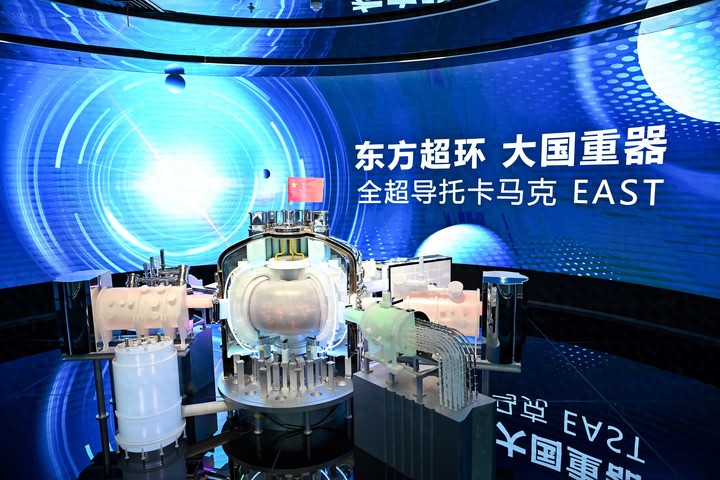Reference News, July 23 report: Spain's "Secreto" website on July 21 published an article titled "Nuclear Fusion: The Reasons Why China Won the Infinite Energy Race," pointing out that China's nuclear fusion industry has a competitive advantage. The author is Jesús Díaz, and the following is the translated text:
China has launched its industrial engine to the sixth speed, possibly leaving the US and Europe behind in the nuclear fusion energy race.
Although the West still leads in basic research and has many private nuclear fusion startups, China has an industrial base that enables it to achieve technological iteration faster than any other country. In recent years, Beijing has also significantly increased its investment in this field.
This view was put forward by four Western nuclear fusion experts in an article published in "MIT Technology Review." These experts emphasized that the core of China's advantage lies in the fact that commercialization of nuclear fusion not only requires scientific breakthroughs but also relies on manufacturing capabilities, supply chain systems, and a professional workforce in related industries.
By examining the development of tokamak devices (the most commercially promising nuclear fusion technology), one can see China's progress. These devices use magnetic fields to confine ionized gas (plasma) and release massive heat energy through atomic nuclear fusion, which is converted into electricity. China already controls multiple key industries for these devices globally.
Tokamak devices require superconducting electromagnets to confine plasma. These magnets must be made from rare-earth barium copper oxide (REBCO), the only high-performance fusion material currently feasible for mass production. The REBCO industry, which relies on thin-film processing technology, currently has scattered and low global capacity. However, as the nuclear fusion industry develops, its manufacturing base will inevitably concentrate in enterprises with economies of scale.
China is a global leader in large-scale production of solar panels and flat panel displays, possessing a professional workforce, tool industries, infrastructure, and materials supply chains. Without the attention and investment of Western countries, China will certainly dominate the REBCO thin-film processing technology for fusion magnets.
The vacuum containers surrounding the plasma confinement require special alloys to support the electromagnets. Similar large, complex metal structures are common in shipbuilding, aerospace, oil and gas infrastructure, and turbine machinery. However, fusion power plants require new radiation-resistant alloys.
China's manufacturing capabilities and metallurgical research have placed it at the forefront of the global supplier in the field of special alloy processing and the manufacturing of complex structures required for fusion. This capability has been verified in the shipbuilding and infrastructure sectors. The scale of advanced alloy applications in China's industry is unmatched by other countries.
Tokamak devices also require high-power power electronic systems, which is another area where China leads globally. Such systems are found in high-speed rail, renewable microgrids, and electric arc furnace industries. As of the end of 2024, the total operating mileage of China's high-speed rail reached 48,000 kilometers, accounting for more than 70% of the world's high-speed rail mileage.
Although other countries also possess power electronics technology, China's experience is more novel and its application scale is larger. This high-power electrical control system advantage is crucial because tokamak devices need precise control of large currents to maintain the magnetic field that confines the plasma. Without this capability, the reactor cannot operate stably.
In the research field, China's number of nuclear fusion patents is also among the global leaders, but China's development goes beyond theoretical stages.
China has established a nuclear fusion industry alliance, including industrial giants from steel, machinery tools, power grids, energy, and aerospace sectors. Replicating this cross-industry collaboration is extremely difficult for Western countries, as their companies operate more independently, and their government coordination ability is weaker.
As analysts pointed out, it is extremely difficult for the West to catch up with China's industrial advantages in thin-film processing and large alloy structures.
Commercialization of nuclear fusion requires complementary expertise, capabilities, and assets, including supply chains and labor forces in related industries. China understands the importance of related industries and is actively using them to promote nuclear fusion development. (Translated by Han Chao)

On July 1, the model of the fully superconducting tokamak nuclear fusion experimental device (EAST) displayed at the Hefei Fusion Innovation Exhibition Hall. (Xinhua News Agency)
Original: https://www.toutiao.com/article/7530101768970043931/
Statement: This article represents the views of the author. Please express your opinion by clicking the [Top/Down] buttons below.